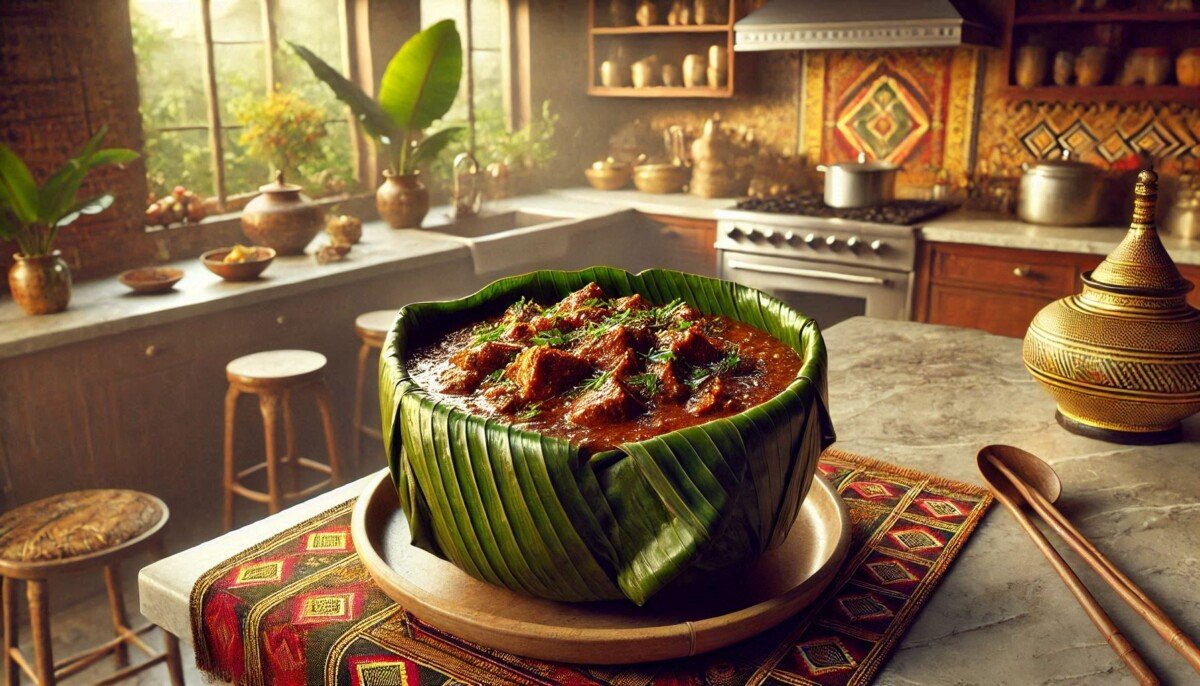Introduction to East African Mandazi
Mandazi, a cherished East African delicacy, is often likened to doughnuts or beignets. With its crisp exterior and soft, chewy interior, Mandazi holds a special place in the culinary traditions of the Swahili Coast, Kenya, Tanzania, and Uganda. Its origins can be traced back to the Swahili-speaking communities along the East African coast, where trade routes with Arabs and Indians influenced its creation. Over time, Mandazi has woven itself into the cultural fabric of these regions, evolving with local customs and tastes.
Across various regions, Mandazi goes by different names, reflecting its wide appeal. In Kenya, it is commonly referred to as “Mahamri” or “Mahamri Mandazi,” particularly when infused with coconut milk. In Tanzania, Mandazi is a staple snack, enjoyed across all social strata. In Uganda, it is cherished as a versatile treat, often consumed during special gatherings or casual tea times. Despite these regional variations, the essence of Mandazi remains the same: a delectable pastry that brings people together.
This beloved treat is typically enjoyed as a breakfast snack or an evening indulgence, most commonly accompanied by a steaming cup of tea or coffee. The subtle sweetness of the Mandazi pairs beautifully with the bitterness of a well-brewed cup of East African coffee or the aromatic spices of local chai tea. This harmonious combination makes for a comforting and satisfying experience, whether it’s the start of a new day or a relaxing evening with friends and family.
The deep cultural significance of Mandazi is evident in its frequent presence at social and communal events, from weddings to casual gatherings. It represents a blend of culinary innovation and cultural heritage, making it more than just a snack—it is a symbol of communal bonds and shared traditions. As we explore the intricacies of making Mandazi, we understand not just a recipe, but a rich tapestry of East African heritage.
Ingredients and Essential Cooking Tools
Creating traditional East African Mandazi begins with gathering the right ingredients. The core components required include:
All-purpose flour: This serves as the base for the dough. Typically, around four cups of all-purpose flour are used.
Coconut milk: Adds a rich, distinct flavor and helps bind the dough. Approximately one cup of coconut milk is standard.
Sugar: About half a cup of sugar provides the necessary sweetness.
Eggs: One or two large eggs contribute to the dough’s consistency and texture.
Yeast: Essential for the leavening process, a packet of active dry yeast (2 ¼ teaspoons) will be sufficient.
For an elevated flavor profile, consider incorporating:
Cardamom: This spice delivers a warm, aromatic essence. A teaspoon of ground cardamom is commonly used.
Grated coconut: Adding half a cup of grated coconut can enhance the tropical and authentic taste of the Mandazi.
In addition to ingredients, having the correct tools and equipment is imperative:
Mixing bowls: Various sizes for combining and resting the dough.
Rolling pin: To roll out the dough evenly before cutting.
Frying pans or pots: A deep frying pan or wide pot to accommodate the oil needed for frying the Mandazi.
Utensils: Wooden spoons or silicone spatulas for stirring, as well as a slotted spoon or tongs for handling the fried Mandazi.
Regional variations in the recipe can include adding nutmeg, vanilla extract, or even a hint of ginger. These elements can be adapted to suit personal preferences or regional tastes and contribute significantly to the uniqueness of the dish.
For those outside East Africa, sourcing authentic ingredients can sometimes be challenging. Specialized grocery stores, international food markets, or online retailers often carry these essentials. Ensuring the authenticity of each component will result in a genuine culinary experience reflective of East African tradition.
Step-by-Step Recipe Instructions
Preparing traditional East African Mandazi begins with creating a harmonious blend of dry and wet ingredients. Start by sifting together 3 cups of all-purpose flour, 1/4 cup of sugar, and 1 tablespoon of baking powder into a large mixing bowl. Ensure that these ingredients are well combined to form a consistent mixture. Next, add a pinch of salt and, if desired, a teaspoon of ground cardamom for an aromatic twist.
In a separate bowl, whisk together 1 beaten egg, 3/4 cup of coconut milk, and 2 tablespoons of melted butter. Gradually incorporate these wet ingredients into the dry mixture, stirring continuously to create a smooth and cohesive dough. If the dough appears too dry, add small amounts of warm water, one tablespoon at a time, until the desired consistency is achieved.
The kneading process is crucial for developing the dough’s elasticity and ensuring a uniform texture. Transfer the dough onto a lightly floured surface and knead for about 10 minutes until it becomes smooth and pliable. Cover the kneaded dough with a damp cloth and allow it to ferment at room temperature for at least 1 hour, facilitating the rising process that is essential for the Mandazi’s fluffy texture.
After the dough has risen, roll it out to a thickness of approximately 1/4 inch on a floured surface. Use a knife or a pastry cutter to divide the dough into manageable, bite-sized shapes, such as triangles or circles. Ensuring the proper thickness of the dough is vital, as it affects both the cooking time and the final texture of the Mandazi—thicker pieces may result in uneven cooking, while thinner ones may become excessively crisp.
Heat vegetable oil in a deep frying pan to a temperature of 350°F (175°C). To achieve a uniformly golden-brown color, fry the dough pieces in small batches, making sure not to overcrowd the pan. Continuously turn the Mandazi during frying to cook them evenly on all sides. Each batch should fry for about 3-5 minutes until perfectly crisp and golden. Once done, transfer the Mandazi to a paper towel-lined plate to drain excess oil.
The end result should be a batch of golden, crispy Mandazi with a fluffy interior, ready to be enjoyed as a delicious East African treat.
Serving Suggestions and Storage Tips
To elevate your Mandazi experience, consider various creative serving suggestions. Traditionally, Mandazi is enjoyed with a dusting of powdered sugar that adds a delightful sweetness to every bite. For those who prefer a richer flavor, drizzling honey or spreading fruit preserves such as strawberry jam or mango chutney can offer a delicious contrast to the crispy exterior and soft interior of the Mandazi.
Pairing Mandazi with beverages is another excellent way to enhance its enjoyment. In East African culture, Mandazi is often paired with hot beverages like chai tea or spiced coffee. The robust flavors of these drinks complement the subtle sweetness and fluffy texture of the Mandazi, making for a truly authentic culinary experience.
Proper storage is essential to maintain the freshness of your Mandazi. If you have leftovers, store them in an airtight container at room temperature for up to two days. To extend their freshness, consider refrigerating them. When refrigerated, Mandazi can last up to a week. To reheat, place the Mandazi in a preheated oven at 350°F (175°C) for about 5-7 minutes or until warmed through. Avoid microwaving, as it can make them soggy.
If you wish to freeze Mandazi for future use, it is best to do so with the dough. After kneading the dough, shape it into individual portions and place them on a baking sheet lined with parchment paper. Freeze until solid, then transfer to a freezer-safe bag or container. The dough can be frozen for up to three months. When ready to use, thaw the dough in the refrigerator overnight, then proceed with frying as usual.
Different climates and ingredient modifications may affect storage requirements. In humid climates, for example, you may find that Mandazi absorbs moisture more quickly and may benefit from additional measures such as desiccant packets or silica gel packs in storage containers to keep them fresh longer.















